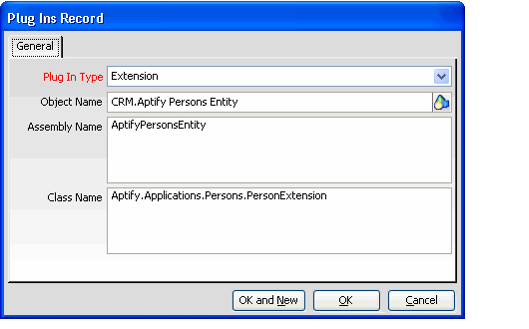About the Plug Ins Form
An organization can configure an entity to use a specially designed form or functionality. To implement this specialized behavior, a developer creates a .NET assembly that defines the entity's extended functionality. These assemblies are then stored in the Object Repository and are added to the entity on the Plug-Ins tab using the Plug Ins record.
Plug Ins records may only be created from the Plug-Ins tab of an Entities record.
Plug In Type (Required)
This field identifies the type of plug in specified in this record. See Adding Plug-Ins to an Entity for more information on plug-in types. While some entities have entity-specific plug-in types, the following types are global and are available for all entities:
ID | Name | Purpose |
1 | Viewer | Alternate data form. |
2 | Entity | Alternate data object. |
3 | Duplicate Check | Specialized duplicate checking -procedure. |
4 | Extension | Alternate context menu. |
5 | Verification | Specialized record verification -process. |
6 | Find | Alternate Find dialog. |
7 | Merge | Specialized record merging -process. |
Object Name
The name of the file in the Object Repository that contains the plug-in information.
Assembly Name
The name of the .NET assembly that contains the plug-in.
Class Name
The name of the class that implements the plug-in.
Copyright © 2014-2019 Aptify - Confidential and Proprietary
